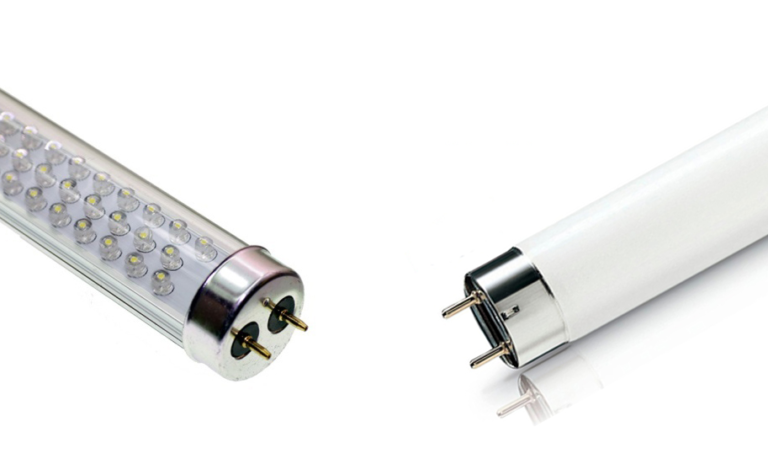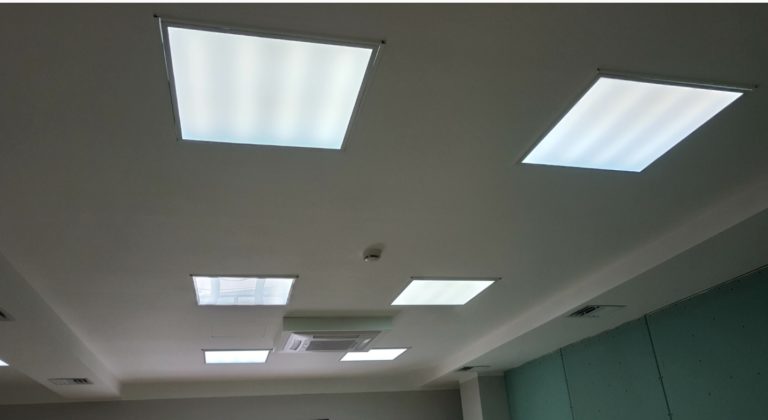What are batten luminaires and how to install them
What is a batten luminaire
A spotlight is an electrotechnical lighting fixture that has a spotlight reflector in its construction. They are usually used as ceiling luminaires.
The word "raster" comes from the German "raster", which is translated as "grid". At the heart of the design is a wavy mirror reflector with a frame grid, through which light streams are dispersed throughout the volume of the room. The grid also protects the lamps from falling out of the device.
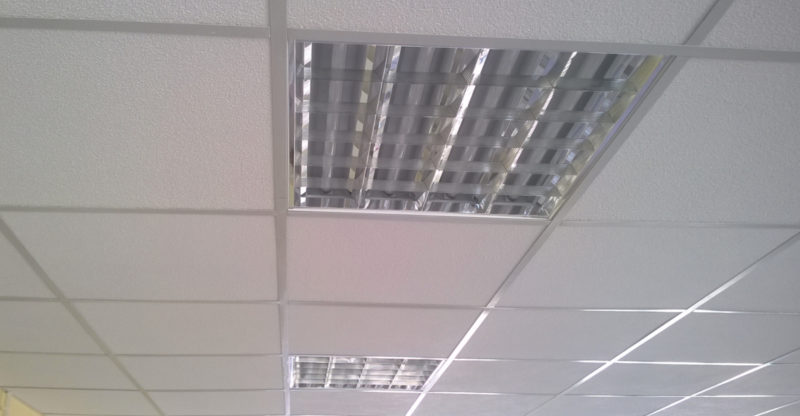
Installation of batten luminaires is possible both on conventional and suspended ceilings. Used mainly for lighting public and industrial premises - offices, trade and concert halls, offices, medical institutions, classrooms, industrial workshops, cafes, bars, entertainment complexes, etc.
Advantages and disadvantages of using
Externally, raster illuminators are made in elegant aesthetic forms with a concise design. At the same time they have a number of significant technical and user advantages compared to other types of lighting products.
- High efficiency and uniformity of light distribution;
- a wide range of luminous fluxes with a diffusing effect at an optimum light density without pulsations and flickers;
- create a favorable and comfortable microclimate for prolonged stay in the room;
- light sources, hidden behind a frame grid, eliminate the adverse effects of light streams on the eyesight;
- Energy-saving power consumption through the use of energy-saving light sources;
- additional protection of LED lamps and fluorescent tubes from external mechanical impacts;
- the design facilitates free access and air circulation, which prevents overheating of the product;
- safe and durable in operation;
- ease of installation and removal on the ceiling coverings.
Among the disadvantages of fluorescent fixtures can be attributed except that they are not commonly used in residential areas. But this disadvantage is not caused by the performance qualities, but by the fact that they are not able to compete in appearance and design with the variety and beauty of modern chandeliers, wall and floor lamps.
However, the good quality of light and the soft diffusion effect of economical European models together with their low cost are used at home - in hallways, utility rooms, workshops, garages, etc.
Design features and varieties
Body of the raster lamp is usually rectangular or square in shape, made of sheet steel with white enamel powder coating. The light source is fluorescent tubes or LED lamps.
The main technical detail of the luminaire, to which it owes its name and popularity - reflective frame grid. It is made by a special technology, most often from plates of thin sheet aluminum. The surface of the plates on both sides is coated in several layers of powder coating paint or anodizing.
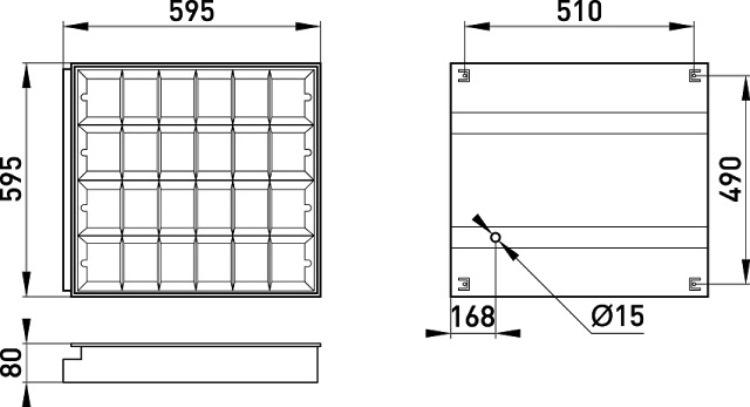
The shape and configuration of the grid cells determine the direction, intensity and density of light scattering. Industry produces about seven kinds of grids with various patterns and combination of cells shapes. In the consumer market the purchaser is mainly interested in the following three variants of reflective gratings.
- V-like grid.. The surface of the plates is polished to a glossy or matte finish. Displays uniform soft diffused light. These gratings are the lightest and comparatively inexpensive.
- Parabolic lattice Made of anodized aluminum plates. Such grids are mounted on large luminaires for a high degree of reflection and dispersion of light beams. Mostly used where there is a need for lighting around the clock - hospitals, railway stations. They give smooth calm light that does not tire the eyes. Good for offices and offices where you have to work a lot with the computer.
- Double, biparabolic gratings - The most powerful and durable, light reflection of 10-15% more than other grids. Provide even illumination without glare and shadow. Used mainly at manufacturing facilities, industrial workshops with round-the-clock lighting. However, there are also small models with biparabolic gratings, which are installed in corridors, hotel lobbies, etc.
Depending on the method and place of installation of recessed and recessed luminaires.
- Overhead products are attached directly to the ceiling slab - plastered or otherwise treated concrete ceilings.
- Recessed models are installed in suspended and suspended ceilings, the luminaire body is not needed here.
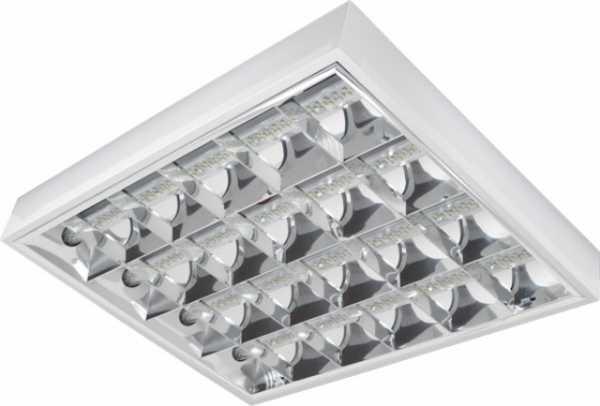
Which lamp to choose, recessed or surface-mounted
The choice of one or another type of lamp will depend on the design of the ceiling. The difference between recessed and surface-mounted models in the way they are mounted.
Surface models Mounted to a normal flat ceiling over a pre-installed mounting profile. They will protrude above the surface of the ceiling. Overhead models are most suitable for large rooms - warehouses, hangars, gyms, exhibitions and trade pavilions. Their advantage is versatility, simplicity and ease of installation.
Recessed models look like an original design solution of the ceiling, its peculiar part without any bulges. Applicable only in suspended structures, where they are mounted flush with the ceiling plane, maintaining an even surface with it. Recessed raster products - a beautiful solution for suspended ceilings of "Armstrong" type, they perfectly fit into a suspended frame, covered with plasterboard.
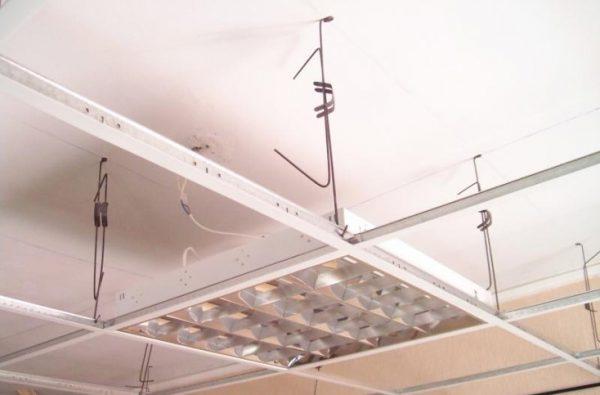
Can the surface mounted luminaire be installed on a suspended ceiling?
Technically yes, although costly, but possible if done carefully. However, in each case, there will still be a risk of collapse of the suspended structure along with the lighting system. It is worth considering how the installation of the overhead protruding model will be in harmony with the suspended ceiling.
Recommended to view: Raster lights in a suspended ceiling.
What tools you'll need for installation
It is better to entrust the installation of the raster lights to professionals, they know all the subtleties and nuances of connection, where mistakes can cost a lot. But if you decide to do such work yourself, you should first carefully study the instructions to the device. There is always a detailed diagram of its assembly and installation on the ceiling.
For the work you will need the following tools and materials:
- tape measure and ruler;
- building level or water level;
- sealing cord;
- hammer, screwdriver;
- Electric drill, a set of drills with pobeditovye tip;
- hacksaw for cutting metal;
- dowels, screws, self-tapping screws;
- mounting profiles;
- stepladder.
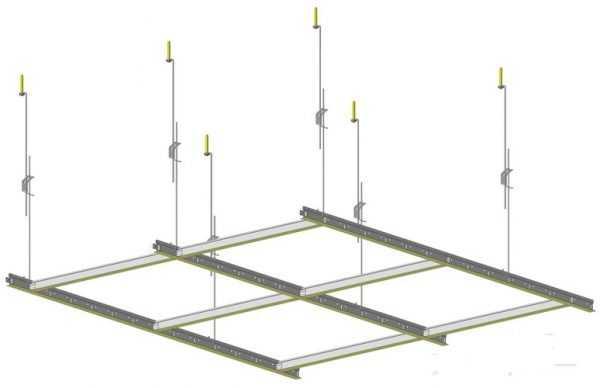
Installation technology
To install spotlights on the ceiling, such as plasterboard, use the following algorithm.
- Mounted on the ceiling is an aluminum framework, consisting of rails and rack profiles arranged perpendicular to them. For fixing, self-tapping screws and hangers are used.
- Marked on the ceiling places for wiring and installation of lighting fixtures, the markings are also transferred to the plasterboard.
- Take out on the ceiling wiring, placed in corrugated sleeves in places of fixing electrical devices leave an overlap of 10-15 cm of cable.
- The framework is covered with plasterboard, then cut holes in it in the marked places with dimensions for the body of the lamp.
- Through the made holes fasten to plasterboard with mounting brackets the body of the lamp. If the light fixture is surface mounted, fix it to the ceiling with self-tapping screws.
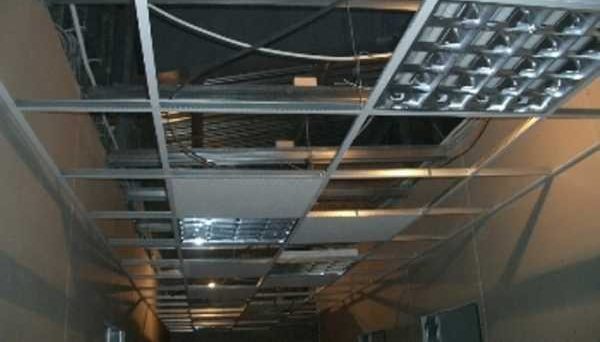
Scheme of wiring
Each luminaire is connected to the general wiring via a terminal block. It is forbidden to make a series connection from fixture to fixture using the terminal block as a distribution block. If the ceiling area is large, it is necessary to place a junction box near a group of lights and lead a separate power cable from the box to each of them.
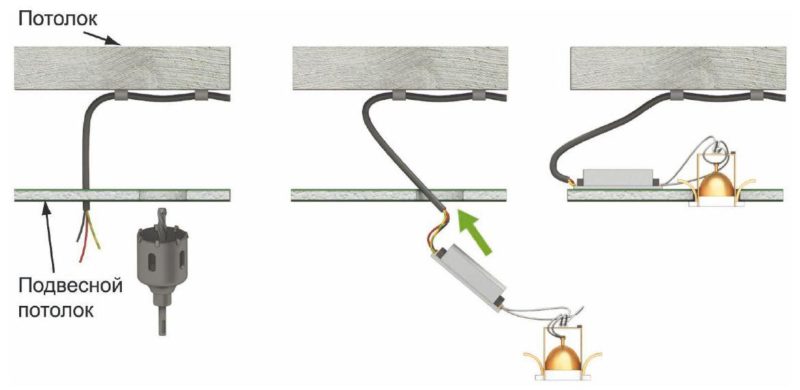
Finish installation of the lighting fixtures check for correctness of connection with a voltage indicator and turn on the system in working order.
